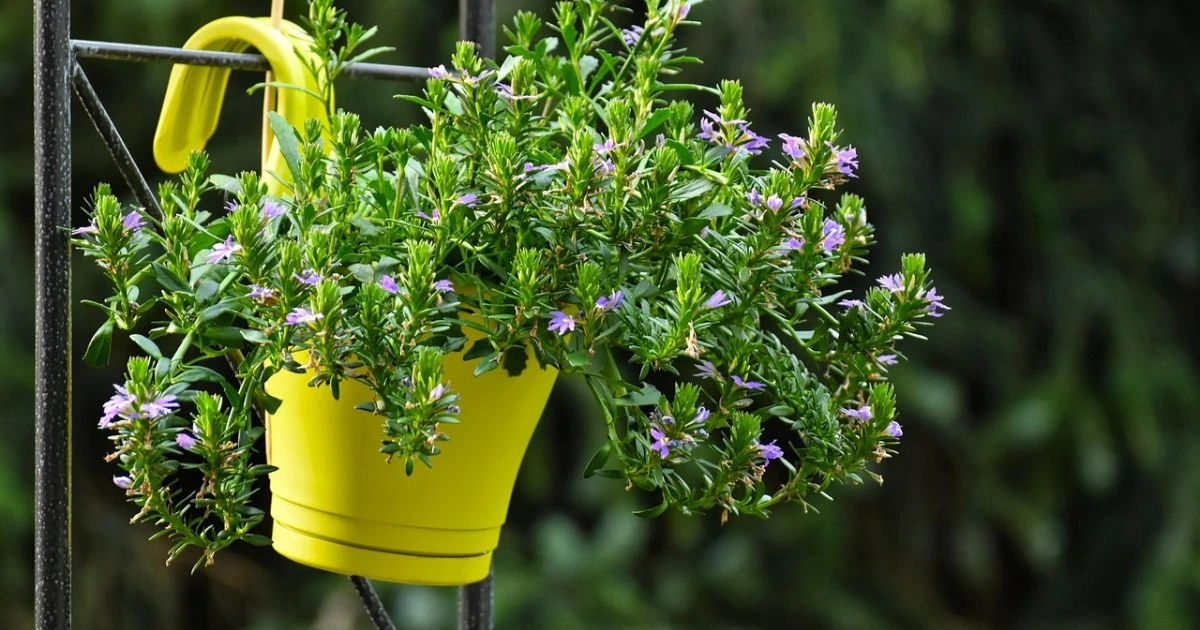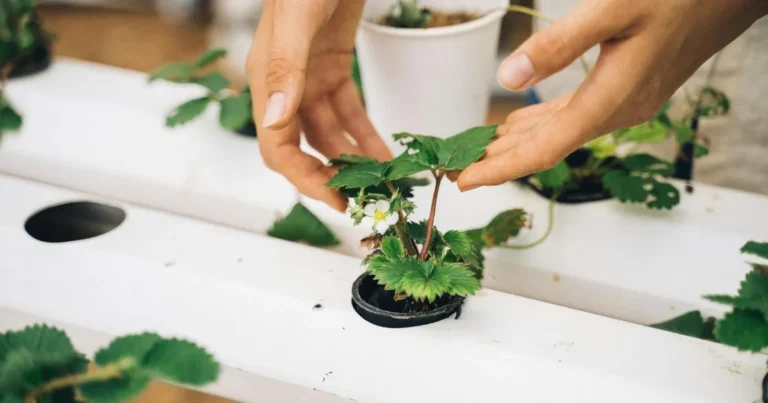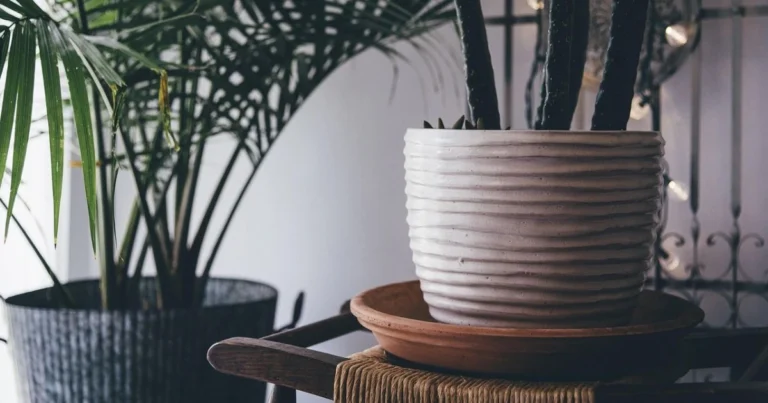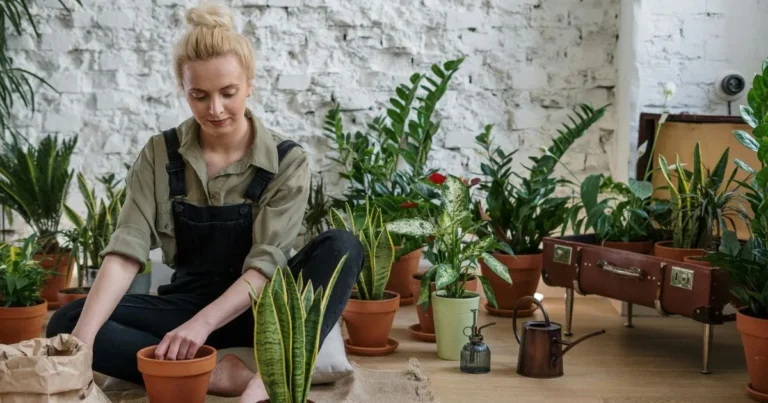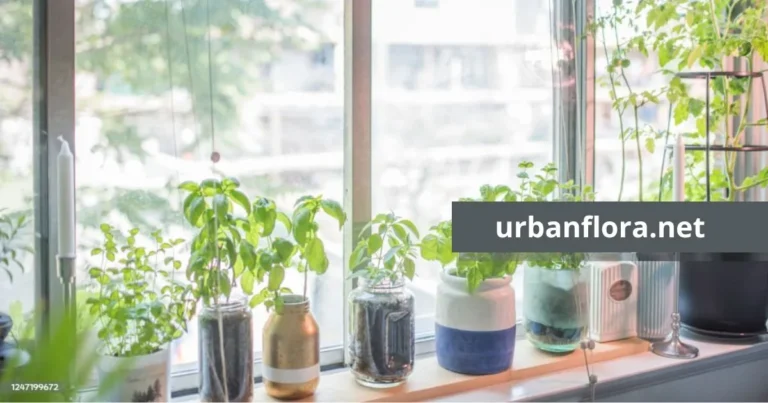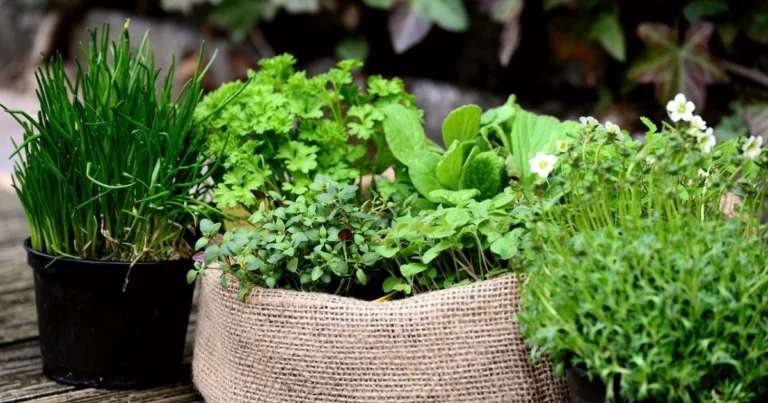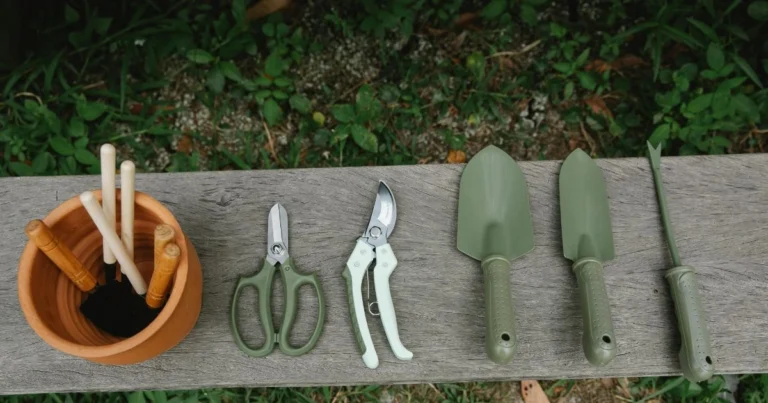Easiest Herbs to Grow Indoors for Fresh Flavors Year-Round: A Guide to Your Indoor Herb Gardens
Table of Contents
Introduction: Bring Fresh Flavors Into Your Home All Year Long
Imagine walking into your kitchen, and instead of reaching for a store-bought jar of dried herbs, you can pluck a handful of fresh basil, mint, or parsley from your very own indoor herb gardens. It’s a simple joy, one that not only elevates your cooking but also enhances your well-being. Growing herbs indoors allows you to enjoy fresh flavors in your meals all year long, regardless of the season.
Whether you’re a beginner gardener or a seasoned enthusiast, the idea of having a flourishing herb garden indoors might feel like a distant dream. But it’s far more achievable than you think. In this article, we’ll guide you through the easiest herbs to grow indoors, offering tips for success and solutions to common problems. You’ll discover how to make the most of your indoor space and ensure your herbs thrive, bringing your culinary creations to life with vibrant, fresh flavors.
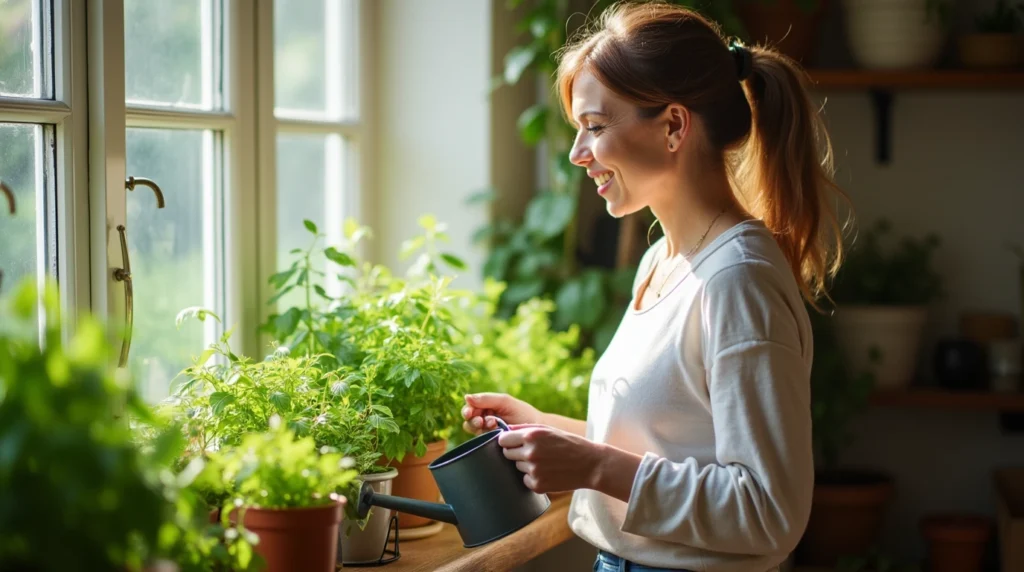
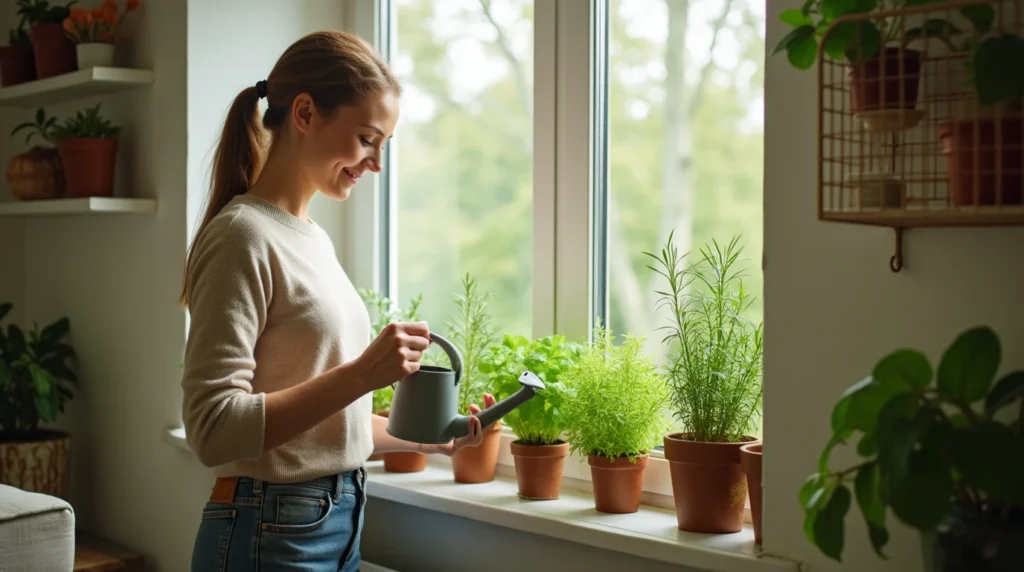
Why Grow Herbs Indoors? The Benefits of an Indoor Herb Gardens
Indoor herb gardens offers more than just culinary convenience. Whether you’re limited on space or simply enjoy having fresh ingredients within arm’s reach, there are numerous reasons why growing herbs indoors can be a game-changer.
Freshness at Your Fingertips
Imagine adding freshly plucked basil leaves or a sprig of rosemary to your favorite dishes. Indoor herb gardens ensures that you never have to rely on store-bought herbs that lose flavor over time. Fresh herbs are packed with flavor and nutrients, making your meals healthier and tastier.
Space-Saving and Convenience
If you’re living in a small apartment or house with little outdoor space, you can still grow a thriving herb garden indoors. Most herbs don’t require much space and can be easily grown in small containers or on windowsills. Indoor gardening makes it possible to have fresh herbs without needing a backyard or even a large balcony.
Health and Wellness
Indoor herbs do more than just enhance your cooking. They improve air quality by releasing oxygen and purifying the air around you. Additionally, growing herbs can reduce stress and provide a sense of accomplishment, offering mental and emotional benefits while connecting you with nature in the comfort of your home.
Choosing the Right Herbs for Your Indoor Garden
The key to a successful indoor herb gardens is selecting herbs that are well-suited to the indoor environment. Some herbs are naturally more adaptable to growing indoors, requiring less sunlight or being able to thrive in smaller containers. Here’s a look at some of the easiest herbs to grow indoors, along with their specific needs:
1. Basil
Light Requirements: Direct sunlight for at least 6 hours a day
Care Tips: Basil loves warmth and sunlight, making it ideal for a sunny kitchen windowsill. It’s perfect for adding to salads, pasta dishes, and even homemade pesto.
2. Mint
Light Requirements: Indirect sunlight, tolerates lower light conditions
Care Tips: Mint is extremely hardy and grows well in low light. Just be cautious—it can become invasive, so it’s a good idea to plant it in a container to contain its spread.
3. Parsley
Light Requirements: Low to medium light
Care Tips: Parsley doesn’t need direct sunlight, making it perfect for locations that get partial light. It’s a versatile herb that works well in everything from soups to garnishes.
4. Thyme
Light Requirements: Indirect sunlight
Care Tips: Thyme requires minimal care and can adapt to dry conditions. It’s a great herb for beginners, adding flavor to a variety of dishes, from roasted vegetables to meats.
5. Cilantro
Light Requirements: Moderate light
Care Tips: Cilantro grows best in cooler environments and doesn’t need much sunlight. It’s perfect for adding flavor to Mexican or Asian dishes, such as tacos or curries.
Indoor Herb Gardens Tips and Solutions for Success
Now that you know which herbs are easiest to grow indoors, let’s take a look at how to make your indoor herb gardens thrive. Successful indoor herb gardening depends on a few key factors—light, soil, temperature, and proper care. Here are a few helpful tips to kickstart your journey:
Optimal Light Conditions
Herbs need plenty of light to grow strong and healthy. While some herbs, like mint and parsley, are more forgiving, most indoor herbs require at least a few hours of sunlight each day. If you’re lucky enough to have a sunny window, that’s the perfect spot for your herb garden.
If natural light is limited in your space, consider investing in grow lights. These are special lights designed to mimic sunlight and provide the necessary spectrum for plants to photosynthesize. Position your grow lights about 6 inches above your herbs for the best results.
Watering and Soil
Indoor herbs are susceptible to overwatering, which can lead to root rot. Be sure to use well-draining soil, and choose containers with drainage holes. Water your herbs only when the top inch of soil feels dry to the touch. Avoid letting your herbs sit in water, as this can damage the roots.
Temperature and Humidity
Most herbs thrive in temperatures between 60-75°F (15-24°C), which is typically the range in most homes. If your home is very dry, especially in winter, you may want to increase humidity by placing your herb pots on trays filled with pebbles and water. Alternatively, consider using a humidifier.
Urban Gardening Solutions
For those living in smaller spaces, like apartments or urban areas, indoor herb gardening is the perfect solution. If you’re short on windowsills, consider vertical gardening—using shelves, hanging planters, or wall-mounted pots. Here’s a quick guide to help you maximize space:
| Herb | Light Requirements | Ideal Temperature | Space Needed | Watering Tips |
| Basil | Direct Sunlight | 70-75°F | Medium | Water when soil feels dry |
| Mint | Indirect Light | 65-70°F | Small | Keep soil moist but not soggy |
| Parsley | Low to Medium Light | 60-70°F | Small | Water lightly |
| Thyme | Indirect Sunlight | 65-70°F | Small | Allow soil to dry between waterings |
| Cilantro | Moderate Light | 55-70°F | Small | Water regularly |
Growing Your Indoor Herb Gardens: Step-by-Step Guide
Preparing Your Pots and Soil
Start by choosing containers with good drainage—herbs don’t like sitting in water. Look for pots with holes at the bottom to ensure proper drainage. For soil, choose a light, well-draining potting mix. Avoid using heavy garden soil, as it can lead to waterlogged conditions.
Planting Your Herbs Indoors
Here’s a simple step-by-step guide to get your herbs planted and growing:
- Choose Your Pot: Pick a pot that’s about 6-8 inches wide. It’s always better to choose a container that’s slightly larger than too small.
- Add Soil: Fill the pot with the soil, leaving a small gap at the top for watering.
- Plant the Seeds or Seedlings: Place your herb seeds or seedlings into the soil, ensuring they’re spaced appropriately for growth.
- Water Lightly: After planting, water the soil gently, making sure it’s evenly moist but not soaked.
- Place in an Appropriate Spot: Position your pots in a location that receives adequate sunlight. If you’re using grow lights, adjust them to ensure your herbs get the light they need.
Maintaining Your Indoor Herb Gardens
Once your herbs are planted, it’s important to keep an eye on them. Water your plants regularly, but don’t overdo it. Prune your herbs regularly to encourage fresh growth and prevent them from becoming leggy.
Troubleshooting Common Indoor Herb Gardens Issues
Even the best gardeners run into challenges. Let’s take a look at some common issues you might encounter when growing herbs indoors, and how to resolve them.
Problem: Lack of Sunlight
If your herbs aren’t getting enough sunlight, they may become leggy or stop growing altogether. Try moving them to a sunnier spot or supplementing with grow lights.
Problem: Overwatering or Underwatering
Check the soil regularly to determine whether your herbs need water. Overwatering is a common problem that can lead to root rot, while underwatering will cause your plants to wilt. Stick to the “dry-to-the-touch” method for watering.
Problem: Pests and Diseases
Indoor herbs are less prone to pests than outdoor plants, but they can still attract insects like aphids or spider mites. If you notice pests, gently wipe your leaves with a damp cloth or use insecticidal soap to treat the plants.
FAQs About Indoor Herb Gardens
1. What herbs grow best indoors with little sunlight?
Mint, parsley, and thyme are great choices for lower light conditions. These herbs are adaptable and don’t require direct sunlight to thrive.
2. How frequently should I water my indoor herbs?
Water your herbs when the top inch of soil feels dry to the touch. Always make sure your pots have drainage holes to avoid overwatering.
3. Can I grow an indoor herb gardens in winter?
Yes! Indoor herb gardens can thrive year-round, even in winter. Just make sure they receive enough light and are kept in a temperature-controlled environment.
4. What are the easiest herbs to grow indoors?
Basil, mint, parsley, thyme, and cilantro are among the easiest herbs to grow indoors. They require minimal care and thrive in various conditions.
Conclusion: Your Indoor Herb Gardens Awaits
Starting your own indoor herb gardens is easier than you might think, and the rewards are well worth the effort. With the right herbs, a little care, and a few simple tips, you can enjoy fresh, flavorful herbs all year long. Whether you’re adding a sprig of thyme to your roast chicken or garnishing your salad with basil, growing your own herbs brings an extra level of joy to your cooking.
Now that you know how easy it can be to grow herbs indoors, why not start your own herb garden today? Explore the options that best suit your space and lifestyle, and begin cultivating the freshest flavors right in your home. Happy gardening!

